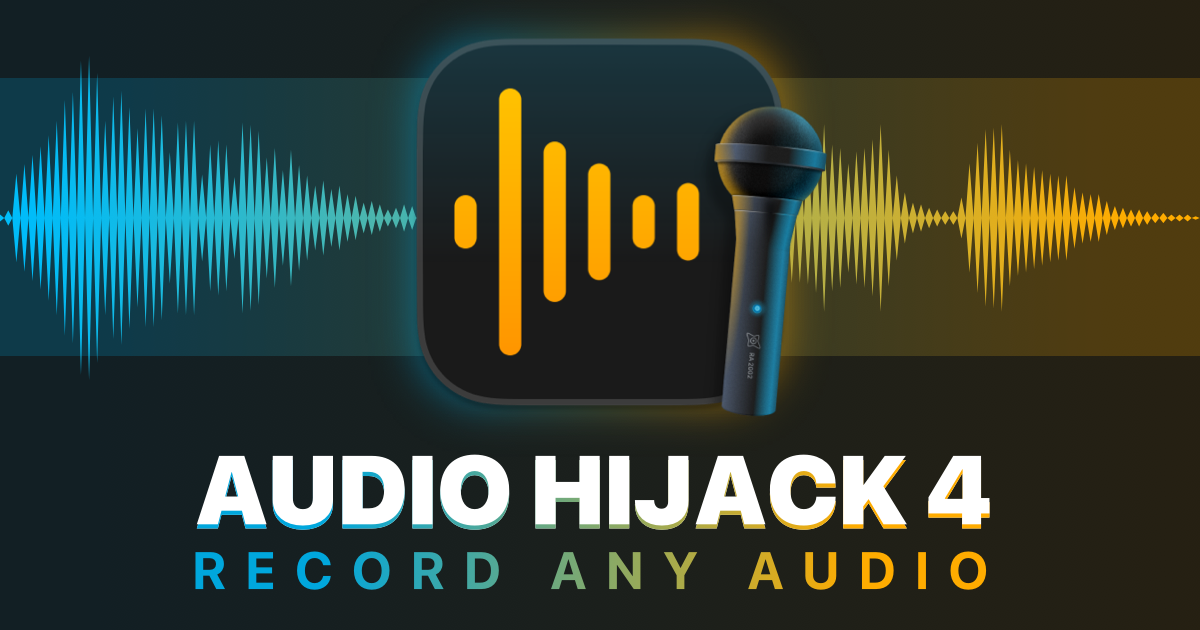
On the left, the Safari web browser has been selected as the source. The Web Audio template will create a session like the one seen above, with three blocks in the audio grid. We'll select the Web Audio template by double-clicking it, and Audio Hijack will create a new session for us. The templates provided make it a snap to get started with common audio capture tasks.

Creating a Sessionįirst, we'll click New Session in the Home window. Follow along with this quick example, as we set up Audio Hijack to record web-based audio from the Safari web browser. Recording AudioĪudio Hijack is most frequently used to record audio from another application running on your Mac, so we're going to demonstrate how to do just that. Once your session is configured, you'll run it to record, broadcast, or adjust audio. Within each session, you'll take blocks from the Block Library and chain them together in the audio grid. Everything in Audio Hijack begins with a session, which is a reusable collection of settings used to capture audio. In no time at all, you'll be recording audio right on your Mac. This is getting more and more interesting as I think about it.Audio Hijack is extremely powerful, but it's also quite easy to pick up. Actually, that’s crazy enough to work and would give me a physical control I could use to turn it up and down. I’ll need a third app for the music bed, unless I put the theme on my Shuffle and play it in through the iMic. I will want to be using Quicktime to play things I am excerpting, and iTunes to play the songs. The tricky part is figuring out what app to play the music bed with. If I go this route though, it really has to be zero edits whatsoever because editing out bits of my talking with the music bed already there would lead to weird skips that would sound like ass.


My no-edit shows still require an hour or two of post-production, so the idea of just doing the music bed and everything live and have the show ready to publish 10 seconds after I stop is downright attractive. It seems like I could use this to do an entirely real-time show that automatically saves to the 96 kbps MP3 when it is done. I downloaded the trial version and will check it out. It sure does seem a lot simpler than what I’m doing. I ran across a reference to this post in the Rogue Amoeba blog that describes how to use Audio Hijack Pro to podcast in a number of scenarios.


 0 kommentar(er)
0 kommentar(er)
